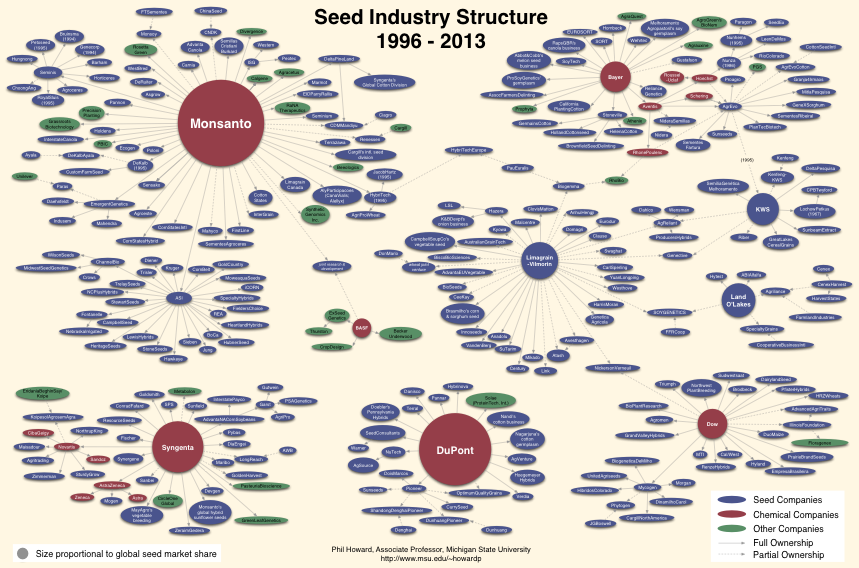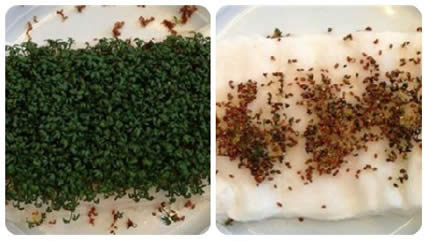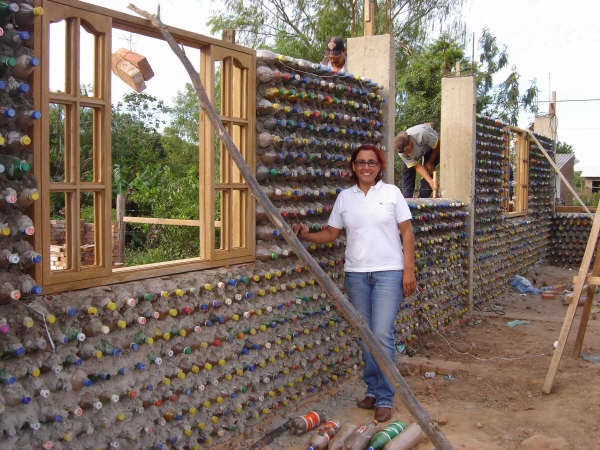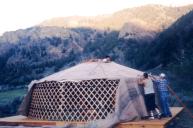Bill 113 –signed By Mayor of Hawaii-GMO Free Zone
William P. Kenoi -Mayor
Walter K.M. Lau -Managing Director
Randall M. Kurohara -Deputy Managing Director
County of Hawaii--Office of the Mayor
25 Aupuni Street, Suite 2603 • Hilo, Hawai'i 96720 • (808) 961-8211 • Fax (808) 961-6553 KONA: 74-5044 Ane Keohokalole Hwy., Bldg. C • Kailua-Kona, Hawai'i 96740
(808) 323-4444 • Fax (808) 323-4440
December 5, 2013
J Yoshimoto, Chair
And Members ofthe Hawai 'i County Council
25 Aupuni Street
Hilo, Hawai'i 96720
Aloha, Chair Yoshimoto and Members:
On Nov. 19, 2013 the Hawai'i County Council adopted Bill 113 Draft 3 adding anew article relating to Genetically Engineered Crops and Plants, and on Nov. 21, 2013 delivered the bill to me for my consideration. After careful deliberation and discussions with members ofmy administration and the public, I am signing Bill I I 3. Our community has a deep connection and respect for our land, and we all understand we must protect our island and preserve our precious natural resources. We are determined to do what is right for the land because this place is unlike any other in the world. With this new ordinance we are conveying that instead of global agribusiness corporations, we want to encourage and support community-based fanning and ranching.
The debate over this bill has at times been divisive and hurtful, and some of our hard-working farmers who produce food for our community have been treated disrespectfully. We are determined to protect every farmer and rancher. Agriculture on Hawai'i Island will continue to grow with county assistance, investment and support. That commitment includes initiatives such as the public-private partnership to improve and expand the Pa'auilo Slaughterhouse to support our grass-fed beef industry, and the launch of the Kapulena Agricultural Park, the largest agricultural park in the state on 1,739 acres of county-owned land. It also includes support for innovative training programs to grow the fanners of the future, and to train veterans to engage in agriculture on Hawaiian Home Lands, and the introduction and advancement ofKorea11 Natural Farming as a sustainable method ofproducing healthier crops and livestock. It includes completion ofthe first-in-the-state Food Self-Sufficiency Baseline Study ofHawai'i Island to
measure the island's progress toward food self-sufficiency. County ofHawai' i is an Equal Oppotnmity Provider and Employer. J Yoshimoto, Chair, And Members of the Hawaii County Council
We are determined to reunite our farming community to create a stronger and more vibrant agricultural sector. It is time to end the angry rhetoric and reach out to our neighbors. Our farmers are essential to creating a wholesome and sustainable food supply on this island, and they deserve to be treated with respect and aloha. We must tum now to a meaningful, factual dialogue with one another. With my approval ofthis bill, our administration will launch a year ofresearch and data collection to investigate factual claims and to seek out new directions that farming in our community should take. This work will include an expanded database detailing the locations of both organic and conventional farms, the crops that are grown, more accurate estimates of the revenue earned from these enterprises, and the challenges our farmers face in meeting food
safety and organic certification requirements. We will work with our farmers and our ranchers to carefully monitor the impacts of this bill over the next year to separate speculation and guesswork from the facts.
Today our communities expect that government will be as cautious as possible in protecting our food and water supplies. We all want to minimize impacts to the environment while also producing abundant, affordable food for local consumption. This ordinance expresses the desires and demands ofour community for a safe, sustainable agricultural sector that can help feed our people while keeping our precious island productive and healthy.
Aloha,
William P. Kenoi ---MAYOR
**********************************************************************
************************************************************************************************
Specific plasma lipid classes and phospholipid fatty acids indicative of dairy food consumption associate with insulin sensitivity
+ Author Affiliations----1From the Baker IDI Heart and Diabetes Institute, Melbourne, Australia (PJN, NS, NAM, GW, CKB, MTG, and PJM), and Metabolomics Australia, Bio21 Institute, The University of Melbourne, Melbourne, Australia (DPDS and DLT).
· ↵3 Address correspondence to PJ Nestel, Baker IDI Heart and Diabetes Institute, PO Box 6492, St Kilda Road Central, Melbourne 8008, Australia. E-mail: paul.nestel@bakeridi.edu.au.
Abstract
Background: Reports have suggested that the consumption of dairy foods may reduce risk of type 2 diabetes on the basis of evidence of raised circulating ruminant fatty acids.
Objective: We determined whether certain phospholipid species and fatty acids that are associated with full-fat dairy consumption may also be linked to diminished insulin resistance.
Design: Four variables of insulin resistance and sensitivity were defined from oral-glucose-tolerance tests in 86 overweight and obese subjects with metabolic syndrome. Plasma phospholipids, sphingolipids, and fatty acids were determined by using a lipidomic analysis and gas chromatography-mass spectrometry to provide objective markers of dairy consumption. Food records provided information on dairy products. Associations were determined by using linear regression analyses adjusted for potential confounders age, sex, systolic blood pressure, waist:hip ratio, or body mass index (BMI) and corrected for multiple comparisons.
Results: Lysophosphatidylcholine, lyso-platelet-activating factor, and several phospholipid fatty acids correlated directly with the number of servings of full-fat dairy foods. Lysophosphatidylcholine and lyso-platelet-activating factor were also associated directly with insulin sensitivity when accounting for the waist:hip ratio (Matsuda index unadjusted, P < 0.001 for both; adjusted for multiple comparisons, P < 0.02 for both) and inversely with insulin resistance (fasting insulin unadjusted, P < 0.001 for both; adjusted, P = 0.04 and P < 0.05, respectively; homeostasis model assessment of insulin resistance adjusted, P = 0.04 for both; post–glucose insulin area under the plasma insulin curve during the 120 min of the test adjusted, P < 0.01 for both). The substitution of BMI for the waist:hip ratio attenuated associations modestly. Phospholipid fatty acid 17:0 also tended to be associated directly with insulin sensitivity and inversely with resistance.
Conclusion: Variables of insulin resistance were lower at higher concentrations of specific plasma phospholipids that were also indicators of full-fat dairy consumption. This trial was registered at clinicaltrials.gov as NCT00163943.
*************************************************************************
Trans Fat “Ban” Not What It Appears
It may actually be a way to promote a Monsanto GMO product. Action Alert!--You may have already heard the news: the FDA has banned trans fats! Well, sort of.--Under the FDA’s proposed rule, trans fat itself is not banned. Instead, the ban is on the major source of trans fats in processed food—partially hydrogenated oils (PHOs). PHOs are artificial trans fats, created via the process of adding hydrogen to vegetable oils in order to make them semi-solid. Naturally occurring trans fat is found in some meat and dairy including beef, lamb and, in small amounts, butter. Many margarines, on the other hand, are made with PHOs and therefore contain high levels of artificial trans fats. Increasingly, margarines are switching to palm oils (which are semi-solid at room temperature and solid if refrigerated) to eliminate PHOs.--It’s important to note that since this is a proposed rule, and not a final one, there’s still a chance it could be changed or dropped. In the rule, the FDA mentions that the agency is open to alternate approaches to addressing PHOs in food, such as the setting of acceptable trans fat threshold levels.---The timing and intent of the FDA’s rule is suspect for two reasons. First, it was announced only after most companies had already eliminated trans fat—it’s currently only in a handful of foods. Second, the ban will promote market demand for two new GMO soybeans by Monsanto and DuPont, which are engineered for trans fat free oils.---Essentially, the FDA released the PHO ban at a politically perfect point: when it would no longer anger Big Food, but would be of tremendous benefit to Big Biotech’s and Big Food’s newly deregulated products.
Here’s the timeline:
- January 2006: The FDA mandates labeling for foods containing trans fat. There is, however, a loophole that allows foods containing fewer than 0.5 grams of trans fat per serving to claim “zero trans fat.”
- 2007 to 2011: By 2011, trans fat is reduced or eliminated in 66% of the most common processed supermarket products. Essentially, the “war” on trans fat in processed food is over.
· January 2011: The FDA signs off on a “safety assessment” on Monsanto’s Vistive Gold soybean (aka MON 87705)—based, of course, on studies submitted by Monsanto.
- December 2011: The USDA deregulates the Vistive Gold soybean, meaning it can be planted anywhere without restrictions.
- November 2013: The FDA issues its proposed ban on trans fat.
Monsanto and DuPont’s soybeans and the oils derived from them (DuPont makes a competing product called Plenish High Oleic Soybean Oil) are meant to appeal to consumers by giving them a “healthy” veneer since they are trans fat free. This is only the beginning: increasingly biotech companies are marketing products that are positioned to benefit consumers’ health but actually contain GMOs. (Read more about it in our article on the subject).--This move ignores the fact that since many processed foods and most whole foods are already free of trans fats, the new GMO soybeans are a superfluous “innovation.” The biotech giants also fail to tell the public that conventional soybean oil, due both to its overuse in American foods and the way it is created, can be incredibly unhealthy.--For the past five or six decades, soybean oil—which is composed of 35% to 55% omega 6 fats—has been the leading fat in processed food: the average American consumes 10% of their total daily calories from soybean oil.[F1] The overconsumption of soybean oil is one of the contributing factors to the average American’s imbalance of omega 3 and omega 6 fats. Additionally, the way nonorganic soybean oil—hydrogenated or not—is produced is inherently toxic:
- Soybean, canola, corn, sunflower, and cottonseed oils are processed with hexane, a known neurotoxin. It’s the same substance that’s used to make gasoline.
- It’s likely that trace amounts of hexane remains in final oil, yet the FDA does not require testing and has not set a maximum residue level for hexane.
- Soybean oil is also treated with sodium hydroxide and phosphoric acid; it’s then bleached with hydrochloric acid, which removes all vitamin A from the oil.
- The “deodorizing” process (in its natural state, soybean oil can be smelly) strips the oil of vitamin E and phytosterols, completing its transition to “nutritionally void.”
In light of its likely political motivations—and despite the rapturous announcement in the mainstream media—we find little to praise in the FDA’s PHO ban.
****************************************************************************
Natural Gene Therapy for Precision and Safety
Spontaneous reversions of inherited disease mutations point the way to new
approaches in gene therapy. Dr Mae-Wan Ho--Another example of natural versus artificial genetic modification
Natural gene therapy is the ability of cells in individuals with hereditary disease to back mutate the gene (s) involved to regain lost biological function, thereby ameliorating the disease. This remarkable phenomenon is receiving increasing attention, thanks to cell sorting and DNA sequencing techniques that enable researchers to detect and analyse even rare populations of mutant cells. It is another example of the precise natural genetic modification that cells and organisms carry out on a routine basis in order to better survive. In a recent review article, “The new genetics and natural versus artificial genetic modification” [1], I contrasted the precision of natural process with the crude, artificial counterpart that inevitably damages the genome and interferes with natural genetic modification. That incidentally also explains
[2] Why GMOs Can Never be Safe (SiS 59). Among the most exquisite examples of natural genetic modification is the ability of cells and organisms to activate or mutate just the right genes in order to overcome an obstacle to growth [3] (Non-Random Directed Mutations Confirmed, SiS 60). In microorganisms, such non-random mutations are obviously adaptive; though not so in multicellular organisms in which cells acquiring a mutation to multiply may mean cancer. But there are situations where such apparently non-random mutations can benefit the organism as a whole, and natural gene therapy is one of them. Somatic mosaics and spontaneous reversions of inherited disease mutations
It has long been assumed that except for lymphocytes in the blood, which undergo genetic rearrangements and hypermutations to generate antibodies and other proteins of the immune system, all cells in the body carry the same genome. And even lymphocytes with genetic rearrangements in the immunoglubulins should have the same gene sequences in the constant subunits of those proteins and in any other gene in the genome. However, as researchers are discovering to their surprise that most individuals are genetically multiple personalities; they have populations of somatic cells with different genomes, a condition known as somatic mosaicism. Of particular interest are those resulting from reversion to normal of disease mutations inherited from their parents [4-6]. Mosaicisms resulting from reversion to normal of an inherited mutation were discovered because of milder than expected clinical course and/or the presence of both phenotypically normal and abnormal cells in vivo and in vitro. To-date, diseases for which spontaneous reversions have been identified include tyrosinaemia type 1, X-linked severe combined immunodeficiency (X-SCID), autosomal adenine deaminase (ADA) SCID, Wiskoff-Aldrich syndrome, Bloom’s syndrome, epidemolysis bullosa, Fanconi anaemia, X-linked ectodermal dysplasia and immunodeficiency, leucocyte adhesion deficiency type 1 [6], Duchenne muscular dystrophy [7], Charcot-Marie-Tooth disease type 1A [8], and Lesch Nyhan syndrome [9].[F2]---There are no systematic data [F3]on the prevalence of spontaneous reversions, but one suspects they may be more common than reported so far, and involving a wider range of inherited diseases. Spontaneous revertant lymphocytes are found in 20 % of Bloom syndrome patients [4, 5], up to a level of 75 %. In hereditary tyrosinemia type (IHT1), a severe disease affecting primarily the liver, reversion was observed in 88 % of patients; with reverted surfaces of the liver ranging from 0.1 % to 85 % [10]. And more than 1/3 of patients with epidemolysis bullosa, a condition involving blistering of the skin, have revertant skin patches [11]. We shall look at some examples before considering whether they are non-random directed mutations. X-linked severe combined immunodeficiency (X-SCID) The latest report of natural gene therapy occurred in a boy suffering from X- SCID caused by mutations in the gene IL2RG coding for the gamma immunoglobulin chain (gc)common to the receptors for several cytokines (signalling molecules secreted by cells of the immune system): interleukin (IL)- 2, IL-4, IL-7, IL-9, IL-15 and IL-21, which signal T and NK cell to multiply. Mutations in the gene
abolish the function of all of these receptors, resulting in the absence or
diminished numbers of T (thymus) and NK (natural killer) cells critical to the
innate immune system; while B cells that secrete antibodies into the blood
stream are normal. Consequently, afflicted individuals often have infections
very early in life, and usually die two years after birth.---The boy was diagnosed at 6 years of age, with normal lymphocyte counts, but suffered from recurrent pneumonia and mollusca contagiosa (viral infection affecting the skin) [10]. As proliferative response of T cells and NK cells to the gc interleukins was poor, the researchers analysed the gene IL2RG. This turned up two forms of the gene despite the fact that there was only one X chromosome (as is normal for males); one of which had reverted to normal. The normal version predominated in both naïve and mature CD8+ T cells, which increased over time. A fraction of gd+T cells (subpopulation of T cells abundant in gut mucosa) and differentiated effector memory T cells carried the reversion, while NK or B cells repeatedly tested negative. The patient has steadily improved over the past 7 years since diagnosis, only suffering once from an atypical pneumonia caused by Mycoplasma pneumonia; and after several years, his molluscum contagiosum started to disappear spontaneously as well.****************************************************************************
Gastrointestinal Hormones and Peptides
There are more than 30 peptides currently identified as being expressed within the digestive tract, making the gut the largest endocrine organ in the body. The regulatory peptides synthesized by the gut include hormones, peptide neurotransmitters and growth factors. Indeed, several hormones and neurotransmitters first identified in the central nervous system and other endocrine organs have subsequently been found in endocrine cells and/or neurons of the gut. Visit the Peptide Hormones page to see a more complete list of gastrointestinal peptides and hormones and their modes of action. The following discussion will focus on the gut peptides with the best demonstrated roles in the control of appetite and feeding behavior via their interactions with signals produced in the hypothalamic-pituitary axis.
Hormone
Location
Major Action
enteroendocrine I cells predominantly in the duodenum, jejunum
stimulates gallbladder contraction and bile flow, increases secretion of digestive enzymes from pancreas, vagal nerves in the gut express CCK1 receptors
derived from N-terminal end of pancreatic colipase; pentapeptide existing in three forms: APGPR, VPDPR, and VPGPR
regulates fat intake, peripheral or central administration inhibits consumption of a high-fat diet but not a low-fat diet
primary site is X/A-like enteroendocrine cells of the stomach oxyntic (acid secreting) glands, minor synthesis in intestine, pancreas and hypothalamus
regulation of appetite (increases desire for food intake), energy homeostasis, glucose metabolism, gastric secretion and emptying, insulin secretion
Glucagon-like peptide-1 (GLP-1)
enteroendocrine L cells predominantly in the ileum and colon
potentiates glucose-dependent insulin secretion, inhibits glucagon secretion, inhibits gastric emptying
Glucose-dependent insulinotropic polypeptide (GIP), originally called gastric inhibitory polypeptide
enteroendocrine K cells of the duodenum and proximal jejunum
inhibits secretion of gastric acid, enhances insulin secretion
primary site is stomach, minor synthesis in intestine
derived from pro-ghrelin protein, acts in opposition to ghrelin action on appetite
enteroendocrine L cells predominantly in the ileum and colon
contains all of the amino acids of glucagon (see Figure below); inhibits meal-stimulated gastric acid secretion similar to GLP-1 and GLP-2 action; induces satiety, decreases weight gain, and increases energy consumption; has weak affinity for GLP-1 receptor as well as glucagon receptor, may mimic glucagon actions in liver and pancreas
pancreas
inhibits pancreatic bicarbonate and protein secretion
enteroendocrine L cells predominantly in the ileum and colon
reduced gut motility, delays gastric emptying, inhibition of gallbladder contraction, induces satiety via actions in the arcuate nucleus (ARC) of the hypothalamus
Vasoactive intestinal peptide (VIP)
pancreas
smooth muscle relaxation; stimulates pancreatic bicarbonate secretion
****************************************************************************
Pancreatin (as a source of supplemental Pancreatic Enzymes) possesses the same therapeutic applications as Pancreatic Enzymes.
Digestive System
Pancreatin may improve Digestion.
Pancreatin may alleviate Pancreatic Insufficiency.
Pancreatin may alleviate some of the symptoms of Pancreatitis.
Immune System
Pancreatin may reduce Inflammation.
Metabolism
Supplemental Pancreatic Enzymes may help to break down the Fibrin that is implicated in the abnormal Blood Clots that are associated with Thrombosis (due to their constituent Proteolytic Enzymes facilitating the process of fibrinolysis). [more info]
Digestive System
Supplemental Pancreatic Enzymes may be a useful treatment for Celiac Disease (many Celiac Disease patients produce insufficient quantities of Pancreatic Enzymes).
Supplemental Pancreatic Enzymes may be a useful treatment for Crohn’s Disease (many Crohn’s Disease patients are deficient in Pancreatic Enzymes).
Supplemental Pancreatic Enzymes may be a useful treatment for Indigestion (many people who suffer from Indigestion produce insufficient quantities of Pancreatic Enzymes).
Supplemental Pancreatic Enzymes may be beneficial for the treatment of Pancreatic Insufficiency (i.e. insufficient endogenous production and secretion of Pancreatic Enzymes).
Supplemental Pancreatic Enzymes may be a useful treatment for Pancreatitis.
Pancreatic Enzymes may help to prevent the proliferation of Intestinal Parasites and Detrimental Microorganisms within the Small Intestine (due to the Proteolytic Enzyme content of Pancreatic Enzymes).
Pancreatin has been used as a means of replacing Pancreatic Enzymes in Cystic Fibrosis patients
Supplementary Pancreatic Enzymes may help to prevent (food) Allergies (by facilitating the digestion of the large molecules that are Antigens in the Foods that cause Food Allergies). references
Pancreatic Enzymes are one of the groups of Enzymes utilized in Enzyme Therapy (i.e. involving multiple Enzymes, especially Proteolytic Enzymes) to break up (degrade) the Immune Complexes that are theorized to cause various Autoimmune Diseases including: [more info]
- Multiple Sclerosis
- Rheumatoid Arthritis
Pancreatic Enzymes (especially Proteolytic Enzymes) may help to reduce (acute and chronic) Inflammation. references
Pancreatic Enzymes (Pancreatin) may help to prevent the proliferation of Intestinal Parasites within the Small Intestine (due to the Proteolytic Enzyme content of Pancreatic Enzymes). ----Pancreatic Enzymes (Pancreatin) help to prevent the proliferation of Detrimental Microorganisms within the Small Intestine (due to the Proteolytic Enzyme content of Pancreatic Enzymes).
Pancreatic Enzymes may prolong survival and retard tumor growth in Pancreatic Cancer patients. --Supplemental Pancreatic Enzymes may accelerate the healing of Shingles.
Supplemental Pancreatic Enzymes are often prescribed (even by orthodox medical practitioners) for the treatment of Cystic Fibrosis (they help to normalize the metabolism of Fatty Acids in Cystic Fibrosis patients). references
Supplemental Pancreatic Enzymes may facilitate weight loss in persons afflicted with Obesity (by causing decreased food intake as a result of stimulating endogenous substances that suppress the Appetite). references
Musculoskeletal System
Supplemental Pancreatic Enzymes may alleviate the Inflammation associated with Rheumatoid Arthritis. ---Supplemental Pancreatic Enzymes may alleviate the Inflammation associated with Tendonitis.
Nervous System
Supplemental Pancreatic Enzymes (Pancreatin) may reduce the severity and frequency of symptom flare-ups in Multiple Sclerosis patients.
Novel Usage of Exogenous, Supplemental Pancreatic Enzymes
Immune System
Supplemental Pancreatic Enzymes (in large doses) may inhibit the growth of tumors involved in Cancer (it is speculated that Pancreatic Enzymes mortalize otherwise immortal Cells (e.g. Cancer Cells)).
[F1]If Not even higher when you figure in all the foods that mention MSG-TVP-HVP- AVP-HPP- Artificial and Natural Flavour-Vege Broths-Vege Oils—and then what the derive out of the soy such as soy lecithin---the level of being corrupted with soy is a lot higher then 10%
[F2]This is huge this means that out systems can un mutate whatever has been damaged as a result we can reverse the unhealthy back to healthy---
[F3]Doesn’t mean nothing exist it just means none has been accessible easily located or recorded for everyone to see






























